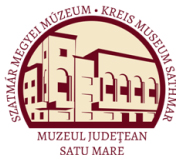Marta, Liviu: The Late Bronze Age Settlements of Petea-Csengersima (Satu Mare, 2009)
V. Conclusions. Contribution of the Petea-Csengersima Excavations to the Knowledge of the Late Bronze Age
proposed to illustrate the Berkesz group. The absence of Noua elements (faintly evidenced earlier as well) and the geographical position (between the settlements that belong to the Suciu de Sus and Hajdúbagos cultures) lead to considering of the settlement as being a cultural mix that reflects the border region of the two cultures720. As in the Suciu Ha phase, close contacts with the Hajdúbagos—Cehăluţ group continue to be present, indicated by the cohabitation mentioned in the settlement at Nyirmada, but also by the mutual pottery imports present in the settlements from the BzD stage at Oros (Hungary)721 and Petea— Csengersima (PI. 49/6). In the case of the settlement at Căşeiu contacts with the Wietenberg IV phase are attested722. Compared to the settlement at Petea-Csengersima, at Căşei the small quantity of excised pottery stands out, although the affinities are expressed by the presence of a small quantity of black-red pottery in both settlements. Based on these elements the common complexes established with the find from Libotin are important (placed by C. Kacsó at the beginning of the Lăpuş II phase), due to which the settlement was dated in a transitional phase from the Suciu de Sus culture to the Lăpuş group723. The research undertaken at the settlement of Petea—Csengersima offers some new elements for the study of the relation between the Suciu de Sus lib and Lăpuş I. Up to this point it was unclear whether the late Suciu finds from the western area of the culture are contemporaneous with the Lăpuş I phase or if these are successive cultural phenomena724 725. In other words it remains debatable whether the Lăpuş I phase is a regional manifestation of the Suciu de Sus culture, or if it is a cultural phenomenon that succeeds the Suciu de Sus culture. This problem is difficult to assume because the only known Suciu de Sus discovery from the Lăpuş Basin remains the eponymous necropolis. The second aspect is the fact that the Lăpuş I phase is present (or at least represented) only in the necropolis at Lăpuş723. As a result there is a difficulty in considering the excised pottery from Lăpuş as being the expression of a first phase of the necropolis726, or there is a need to consider the possibility that it represents only the heritage of a tradition, captured especially within the graves of the military elite727. Even if the second model has important arguments it relies on the coincidence that graves with excised pottery accumulate only older pieces (be these also weapons). Moreover an assessment on a larger aria around the necropolis (the Upper Tisa Basin) indicates much closer links between early channelled pottery and the bronze finds from Cincu-Suseni/ Kurd type deposits. Without commencing a detailed analysis of the uncertain pottery assemblages from the levelled necropolis at Suciu de Sus, it can be said that its pottery alongside the general characteristics of the Suciu de Sus II phase (Kacsó), has a few elements specific of the Suciu de Sus Ila site728. As a result, just as in the region of Satu Mare two cultural phenomena (Suciu II and Lăpuş I) are not attested by finds during the BzD stage, there are elements which suggest that the Suciu de Sus II—Lăpuş I succession took place in the Lăpuş Depression at least in an early time interval of the BzD stage. The material from Petea- Csengersima also indicate a Suciu de Sus lib—Lăpuş I synchronism, through the existence of 72uTóth - Marta 2005, p.123-128. 721 Bejinariu - Székely — Sana 2008, pi. X/1,3. 722 Gogâltan 2001, p. 192-194. 723 Gogâltan 2001, p. 195. 724 Kacsó 1990a, p.46; Kacsó 2001, p. 240. 725 In the repertories concerning the Lăpuş group discoveries there is no separation of these made based on phases. The exception is only the Lăpuş I setdement at Oarţa de Sus — Oul Făgetului. This overlaps a Suciu II setdement and is overlaid by a Lăpuş II setdement! (Kacsó 1990a, p 44; Kacsó 2004a, p.54) 726 Kacsó 1975, p. 51-68. 727 Terzan 2005, p. 246, 250. 728 The pottery published from Suciu de Sus is litde and mixed up (Roska 1942, p. 209; Mozsolics 1960; Vlassa 1963; Bader 1976); among the Suciu IIA elements remarkable are: the great quantity of incisions and simple spirals (Bader 1976, pi. 11/1,2,5, IV/6,7, V/l, VII, VIII, IX), the wheat grain shaped ornament on the rim (Bader 1976 pl. II/7, pi. IV/2,8). 100
